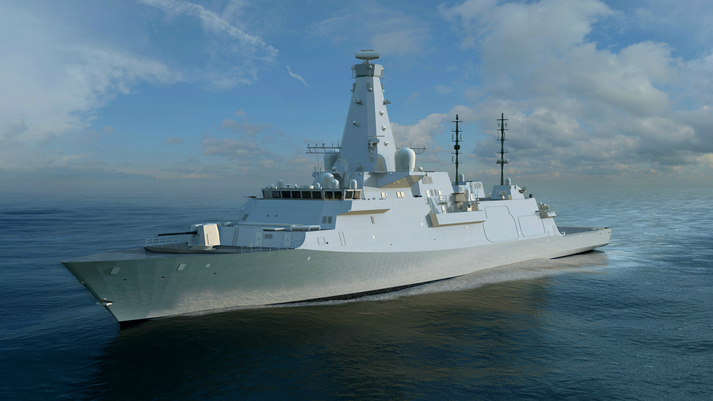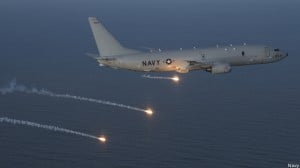Eyeing China, Australia Busily Buys Up Frigates, Drones, and Sub-Hunting Planes
Posted on

WASHINGTON Australia has spent billions on new surveillance planes, drones, and warplanes in recent years, but no deal has come close to today’s $26 billion award to BAE Systems for nine anti-submarine frigates.
The decision will significantly bolster the Royal Australian Navy’s submarine-hunting and missile defense capability at a time of huge Chinese investments in undersea warfare, while giving the RAN the ability to see — and shoot — father than is currently possible.
The BAE Systems design for its Type 26 frigate beat out hulls from Italy’s Fincantieri and Spain’s Navantia SA, and are slated to begin entering service in the late 2020s.
The frigates will not only prowl for submarines in the increasingly crowded western Pacific, but will also be fitted with the Lockheed Martin Aegis combat-management and air defense system. That will allow them to work closely with US, Japanese and South Korean ships outfitted with Aegis.
The new Hunter-class frigates will also be equipped with Australian-developed CEA phased-array radar, along with 24 missile cells, giving the ships some added punch on top of the three current Hobart-class destroyers, which are also outfitted with the Aegis platform, as well as 48-cell launch systems.
The announcement of the contract came the same week that Prime Minister Malcolm Turnbull announced that his government will purchase six Northrop Grumman MQ-4C Triton unmanned surveillance aircraft in a $5 billion deal, which are slated to be delivered between 2023 and 2025.
The double punch of submarine-hunting ships that can track objects and knock down ballistic missiles with the long-endurance drones will allow the Australians to provide surveillance and reconnaissance across the Indian, Pacific and Southern oceans as far as Antarctica, Minister for Defense Industry Christopher Pyne said in a statement.
“Together these aircraft will significantly enhance our anti-submarine warfare and maritime strike capability, as well as our search and rescue capability.”
In a nod to demands by President Trump that American allies spend more on their own defense, Pyne added that “we want to be a good ally and we want to look after our own national interests.”
The Triton will work in concert with eight new P-8A Poseidon submarine-hunting aircraft that Australia contracted with Boeing to buy in 2015. The planes will replace the older AP-3C Orions by 2021.

P-8 Poseidon
The Triton sale “is a great example of the emerging high-end ISR architecture the U.S., Australia, Japan, and India are constructing across maritime Asia,” Eric Sayers, former advisor to the commander of the U.S. Pacific Command, told me. “Three of these four countries now have either Global Hawk or Triton and three are also operating the P-8. To go further, they should explore ways to upgrade their information and intelligence sharing agreements to truly take advantage of the capability these platforms offer.”
The rush to buy high-end surveillance platforms across the region comes in response to years of effort from China to dominate the South China Sea and intimidate its smaller neighbors, including building islands on a series of reefs and outcroppings in international waters, and laying down airstrips and air defense systems on top, despite widespread international condemnation.
Earlier this week, Chinese President Xi Jinping told Defense Secretary James Mattis in Beijing that his country “cannot lose even one inch of the territory left behind by our ancestors. What is other people’s, we do not want at all.” Of course, many of the Chinese territorial and maritime claims are relatively recent and the broadest have been completely rejected by international authorities.
Washington and its allies are also eyeing burgeoning Chinese submarine capabilities, which currently number about 48 diesel-powered subs, and more than 10 nuclear-powered attack and guided-missile subs, according to the latest estimates.
The frigate deal also puts BAE in a good spot in the competition to build 15 frigates for Canada in a $60 billion program to replace that country’s aging frigates, though the program is mired in controversy over cost and requirements (remember the F-35 purchase?). It’s unclear when a decision might be made on the winner, but Canadian defense officials said they want the first ship to be delivered in the mid-2020s.
While the Type 26 isn’t competing in the U.S. Navy’s frigate program, both the Navantia/General Dynamics team and Fincantieri frigate designs are in the running. The U.S. Navy is only evaluating ship types that are operational.
Subscribe to our newsletter
Promotions, new products and sales. Directly to your inbox.
